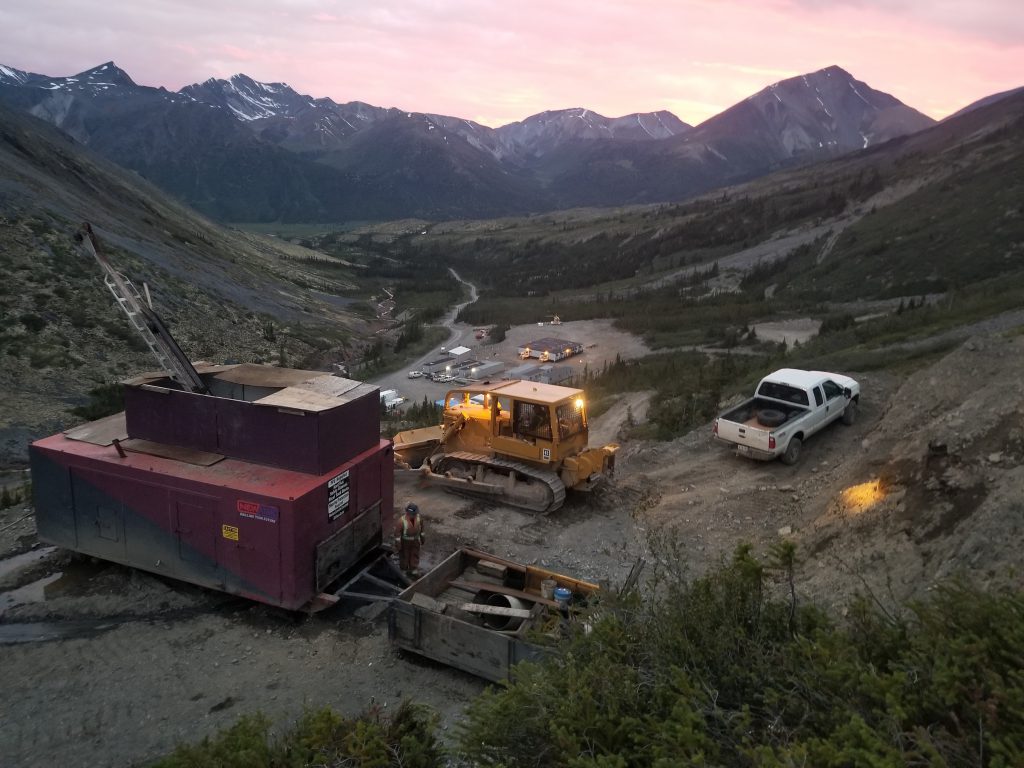Fireweed drills 12.31% zinc over 124.49 metres at Macmillan Pass, Yukon

Fireweed Metals Corp. [FWZ-TSXV; FWEDF-OTCQB; 20F-FSE], formerly Fireweed Zinc Ltd., reported the first results of the 2022 drill program at their flagship Macmillan Pass zinc-lead-silver project, located within the prolific Selwyn basin zinc district of Yukon, Canada.
Highlights: At Boundary West Hole NB22-002 intersected high-grade massive sulphides and veins: 124 metres of 12.3% zinc, 1.3% lead, and 45.9 g/t silver, including 60 metres of 19.0% zinc, 1.6% lead, and 64.7 g/t silver, the best ever intersection recorded anywhere at Macmillan Pass, in terms of grade x thickness.
Step-out hole NB22-002 successfully extended the Boundary West massive sulphide mineralization, which remains open in multiple directions, including towards where geological vectors suggest a feeder zone may be present in which higher grades and thicknesses may be found.
Hole NB22-002 also intersected a new zone of massive sulphide and volcanics over 18.5 metres grading 6.15% zinc, 0.39% lead, and 14.3 g/t silver that remains open to the south.
Brandon Macdonald, CEO, stated, “The first results from the 2022 program include the best intersection that we have ever had at Boundary Zone, or anywhere on the property including our Tom and Jason deposits. Boundary West seems to get higher grade the more we chase it to depth, and we see great potential for this massive sulphide zone-it is open along strike on both sides, and at depth, including in the direction toward the potential feeder structure. These are exceptional assays to kick off reporting of our 2022 drill results.”
The increase in zinc, lead and silver grades towards the east and with depth at Boundary West suggests that the feeder structure is located to the east and/or at depth from hole NB22-002, where the massive sulphide zone remains open. The massive sulphide mineralization is also open at depth to the west of hole NB21-002. Laminated barite occurs within the massive sulphide (~366-375 m) and silicified black mudstone occurs around the margins of the zone.
An apparent offset of approximately 40-50 metres relative to other intersections of the massive sulphide zone reported from Boundary West to date, coupled with the absence of directly overlying massive sulphide in an adjacent hole lead to the interpretation that the massive sulphides intersected in NB22-002 are separated by a small-scale fault from the rest of the massive sulphides previously drilled at Boundary West.
Angles of bedding to core axis within and on either side of the massive sulphides suggest that true thicknesses are likely to be approximately 60% to 80% of intersected thickness. Additional drilling is required to determine any potential extension of the massive sulphide to the east and to more accurately delineate structure and true thicknesses.
Diamond drill hole NB22-001 resulted in a successful step-out intersection of the laminated zinc mineralization at Boundary West of 4.87 metres grading 6.71% zinc, 1.56% lead, and 40.5 g/t silver. NB22-001 also demonstrated continuity of the massive sulphide zone at Boundary West with a separate 38.27-metre intersection of dense massive pyrite-sphalerite and minor vein-hosted sphalerite that graded 1.22% zinc, 0.04% lead, and 14.9 g/t silver.
Fireweed owns 100% of the district-scale 940 km2 Macmillan Pass project which hosts the Tom and Jason zinc-lead-silver deposits with current Mineral Resources and a PEA economic study as well as Boundary Zone (including Boundary Main and Boundary West), Tom North and End Zone which have significant zinc-lead-silver mineralization drilled but not yet classified as mineral resources.
The project also includes large blocks of adjacent claims with known showings and significant upside exploration potential. A large, four-rig 2022 drill program is now complete and assays are being reported as they are received and interpreted.
